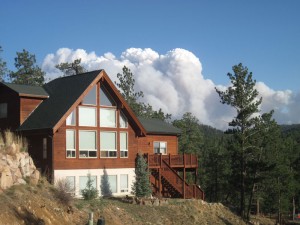As I was riding on the bike path along I-470 this morning, the wind whizzing through the vents in my my helmet as I labored uphill toward Golden, I passed a cyclist plummeting downhill at top speed with a bare head. “What an idiot!” I thought.
My husband has landed in the ER twice because of riding accidents – once he toppled headfirst when he hit a raised utility lid while riding downhill, and the second when he hit a dollop of tar that had been dropped onto a newly paved roadway. The second time, an examination of his helmet showed a long, deep ridge in the back, just to the right of where his brain stem would be
Fortunately for me, Bob isn’t a vegetable and I am not a widow for one important reason – he wears a helmet. He still suffered road rashes and mild concussions, but emerged to ride again, and again, and again.
So, with spring here and people stampeding outdoors to get the exercise many of us have foregone all winter, I now present, in no particular order, tips for keeping safe when cycling.
- Always, always, ALWAYS wear a helmet. I don’t care how hot it is. This rule is not negotiable. And make sure your kids are helmeted, too, even riding around the neighborhood. The helmet should fit and be worn snugly, so there is room for just two fingers between the strap and your neck.
- Always tell someone where you are going and when you expect to return.
- Ride what you can handle in terms of distance and terrain. Don’t try to do too much and risk finding yourself far from home and incapable of climbing the big hill you need to forge to get there.
- Ride on the right side of the road, but don’t feel forced onto a narrow shoulder. You are considered a vehicle and cars and trucks are required to pass you and give you plenty of space. When it’s congested, if you’re riding with someone, ride single file.
- Carry a patch kit and a spare tube, and make sure you know what to do with them.
- Carry a pump. Doesn’t do much good to be able to change a tire if you can’t pump it up!
- Carry ID – your driver’s license, or a Road ID device (http://www.roadid.com/) – in case something happens to you. A credit card and $20 cash are a good idea, too.
- Carry a phone. If it has Latitude on it, even better. This app can help your significant other find you if you don’t make it home.
- Make sure your bike is maintained in good condition.
- Always carry a bottle of water or a sports drink. If you’re going more than 20 miles, carry two. It’s a good idea to carry an energy bar or two as well.
- Wear sunscreen.
- Take it slow on the way down, Yes, a fast descent is a real rush, but if the road is windy, make sure you can control your speed, especially if you hit a rock.
- Check the weather before you go out. Sometimes you should stay home – if it’s raining (slippery roads), or there’s thunder and lightning, or hailstorms in the area.
- Dress appropriately, and be prepared. Just because some idiots ride in shorts and short sleeves below 30 degrees doesn’t mean you should. Do you know how to spell “hypothermia?” Also, there’s a huge difference between how your body feels climbing up Squaw Pass (Whew! Sweat!) and how it feels whizzing down the other side (Brrr!). Carry extra gear, at least a wind vest or light jacket. If you’re doing a pass, check the weather at the TOP and prepare for it.
- Ride with friends! Team Evergreen is available for the intense and hardcore. For more moderate mountain cyclists, I just formed the Evergreen Multisport Club. The goal is to bring together cyclists, runners and swimmers for training partners, friends, and fellow competitors. Learn more at www.meetup.com/EvergreenMultisportClub.
- Got any other ideas? Please add them, or share your experiences!
See you on the roads!
Coming next week … Riding with kids when you live in the mountains.




